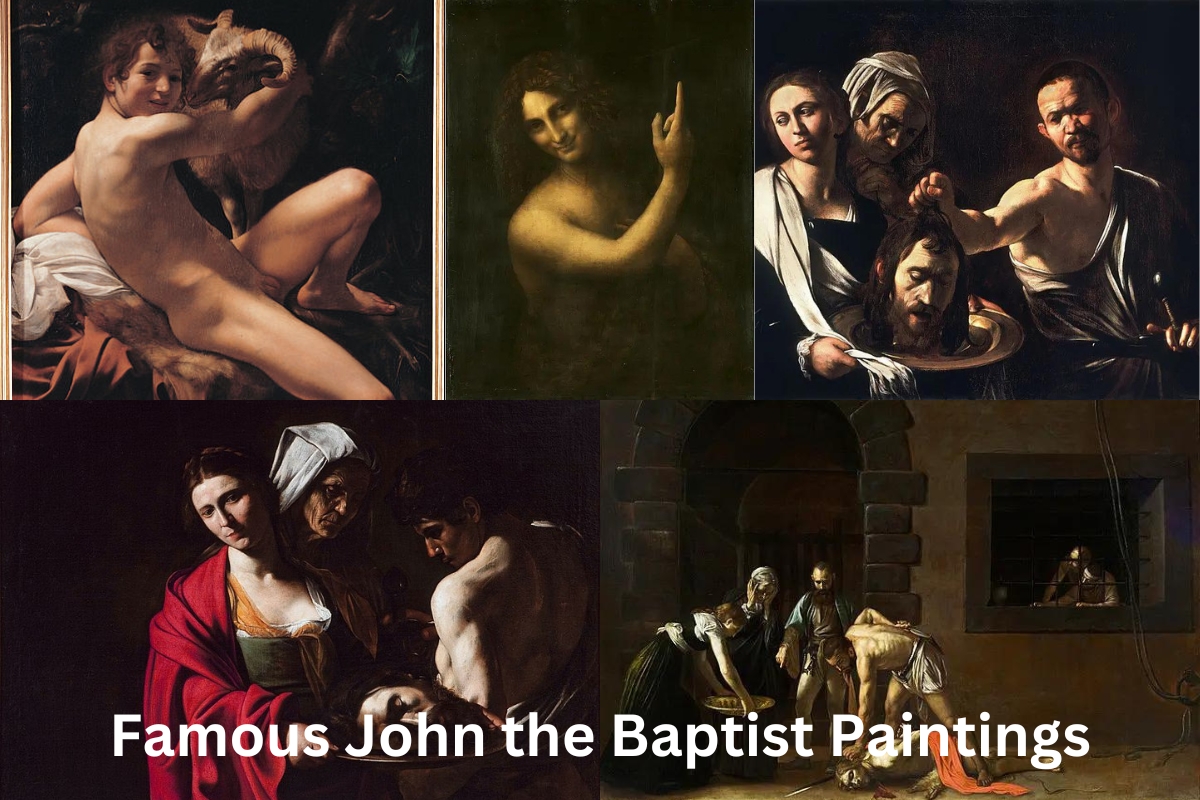One of the earliest scenes from the Life of Christ regularly shown in Early Christian art is the Baptism of Christ, and by the 5th century, John the Baptist’s tall, slender, even gaunt, and bearded appearance is already established.
Saints John the Baptist and the Holy Virgin Mary are commonly accompany Jesus in Byzantine and subsequent Eastern Orthodox art. In time, the Deesis’s composition made its way into every Eastern Orthodox church.
In western art, The Baptist appears frequently on altarpieces commissioned for churches named after their patron or honoring him in some other way.
St. John the Baptist is the city’s patron saint, hence he appears frequently in works of art from Florence, as well as in the city’s many baptistries.
The mosaics on the vault, the bronze doors by Andrea Pisano, and the huge silver altar (now in the Museo dell’Opera del Duomo) in the Florence Baptistery all feature St. John the Baptist.
Famous John the Baptist Paintings
1. Saint John the Baptist – Leonardo da Vinci
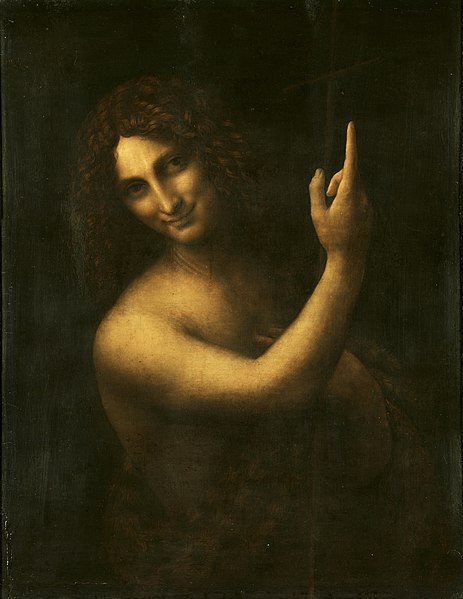
Saint John the Baptist, by Leonardo da Vinci, is an oil on walnut wood. It was completed in 1516, making it one of da Vinci’s final series of works.
In the artwork, John the Baptist stands out against a black background as though emerging from the shadows thanks to the use of chiaroscuro.
Like Leonardo da Vinci’s famous Mona Lisa, this saint wears furs, has long, curling hair, and wears a mysterious smile.
Even though it had been polished on a regular basis, it had not had a complete restoration since 1802.
The original painting’s nuances and color were lost beneath the varnish, which had yellowed over the course of around 15 layers.
2. The Beheading of St John the Baptist – Caravaggio
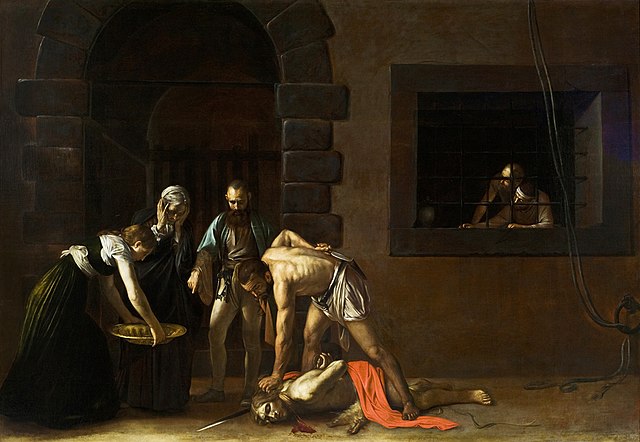
“The Beheading of Saint John the Baptist” is a 3.7 m by 5.2 m oil painting depicting the martyrdom of John the Baptist. It is currently housed in the Valletta, Malta, Oratory of St. John the Co-Cathedral.
Also Read: Catholic Paintings
The Baroque style’s signature reds and golds are brought out by the use of chiaroscuro in this massive canvas. One of the figures in the painting is a servant girl holding a golden plate, seemingly ready to receive the severed head of John the Baptist, the martyr.
In silence, another woman watches as the jailer issues commands and the executioner pulls his knife to complete the beheading. This could be Herodias or a witness who has seen the execution is being carried out incorrectly.
3. John the Baptist (Youth with a Ram) – Caravaggio
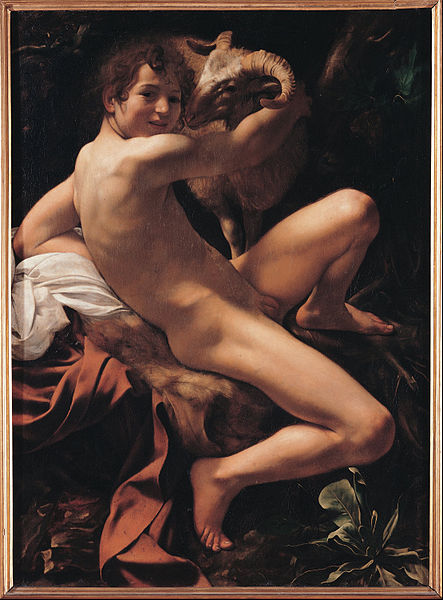
John, in his youth, is depicted half-reclined, with one arm draped over the neck of a ram and his cheeky grin turned toward the observer.
No cross, no leather belt, just a strip of camel’s hide buried in the voluminous folds of the crimson robe and the ram; almost nothing to indicate that this is actually the prophet sent to make straight the route in the wilderness.
The ram is a major deviation from canonical traditions, as it was traditionally a lamb that John the Baptist used to herald the arrival of Christ as the “Lamb of God” sent to atone for human sin.
The ram is a symbol of both lust and sacrifice, yet the sinlessness of this shirtless teen’s grin belies his sinlessness. Biographers have argued over whether or not Caravaggio was a devout Counter-Reformation Catholic.
4. Salome with the Head of John the Baptist, London – Caravaggio
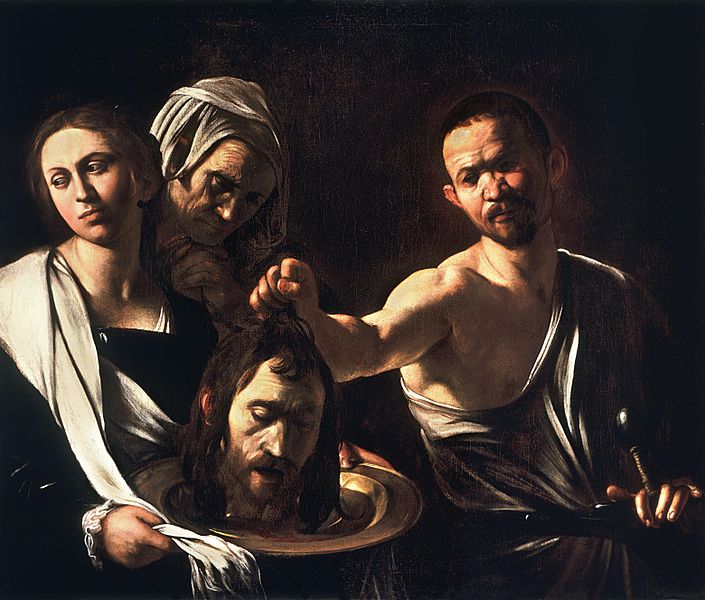
The Italian painter Caravaggio’s painting Salome with the Head of John the Baptist (London), c. 1607–1610, is on display at the National Gallery in London.
In 1959, the picture was unearthed from a private collection. In 1673, the first Caravaggio biographer, Giovanni Bellori, wrote that the artist had sent the Grand Master of the Knights of Malta a painting titled Salome with the Head of John the Baptist in an effort to win back the favor of the Order, from which he had been exiled in 1608.
To be sure, Bellori may have been referring to a different Caravaggio picture depicting the same topic (see below for Salome with the Head of John the Baptist at the Royal Palace of Madrid). The brushwork and raking light are reminiscent of the artist’s works from his brief sojourn in Naples in 1606 and 1607.
5. Madonna and Child with Saints Polyptych – Duccio
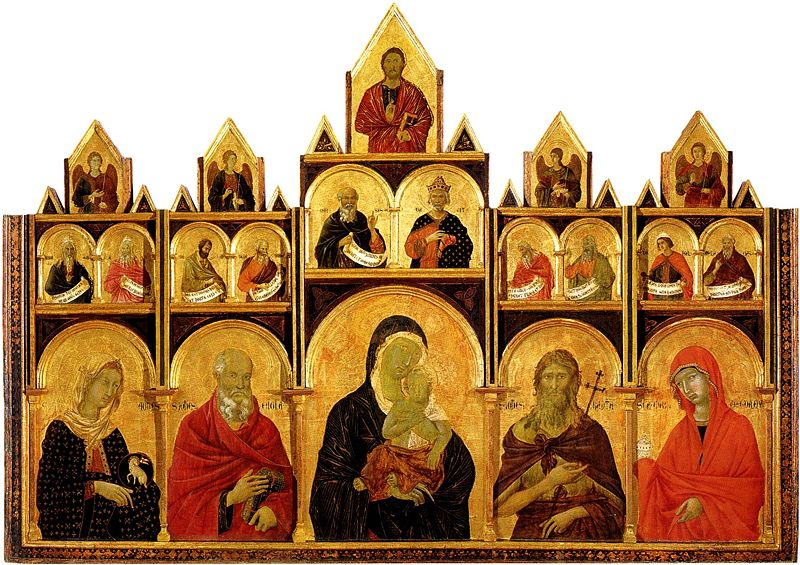
Duccio di Buoninsegna, an Italian Renaissance artist, created a five-panel Madonna polyptych titled Madonna and Child with Saints Polyptych (also known as Polyptych no. 47 by Duccio).
The use of vivid hues and gold leaf is characteristic of Duccio’s work. Ten patriarchs and prophets are depicted above the Madonna and Child and four saints in the polyptych.
Christ stands at the center of the polyptych, with four angels on either side. Saints Agnes, John the Evangelist, John the Baptist, and Mary Magdalene are represented.
Pinacoteca Nazionale in Siena, Italy houses this tempera and gold on wood painting dated to the years 1311–1318.
6. Salome with the Head of John the Baptist, Madrid – Caravaggio
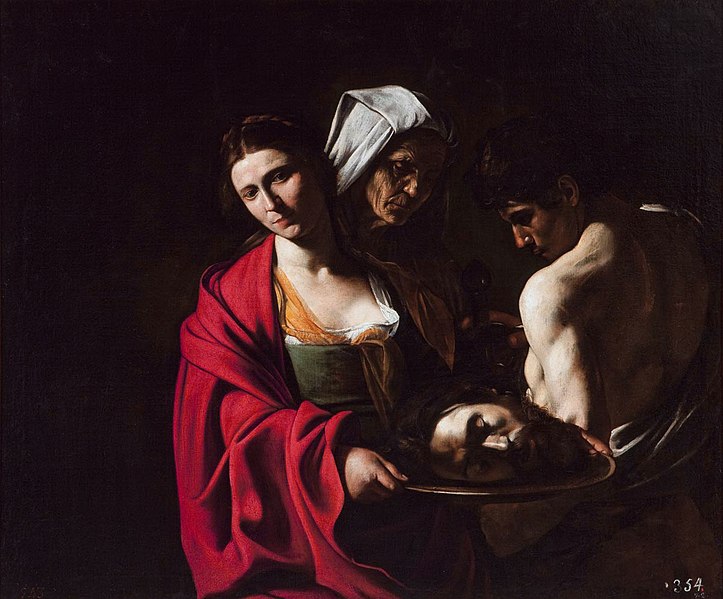
The Italian maestro Caravaggio painted Salome with the Head of John the Baptist (Madrid) around 1609. It is currently on display in the Palacio Real in Madrid.
The executioner’s gaze upon the severed head helps the picture evolve from a shocking scene into a profound contemplation on mortality and the ugliness of human nature.
7. Virgin and Child with the Young Saint John the Baptist, Saint Cecilia, and Angels – Piero di Cosimo
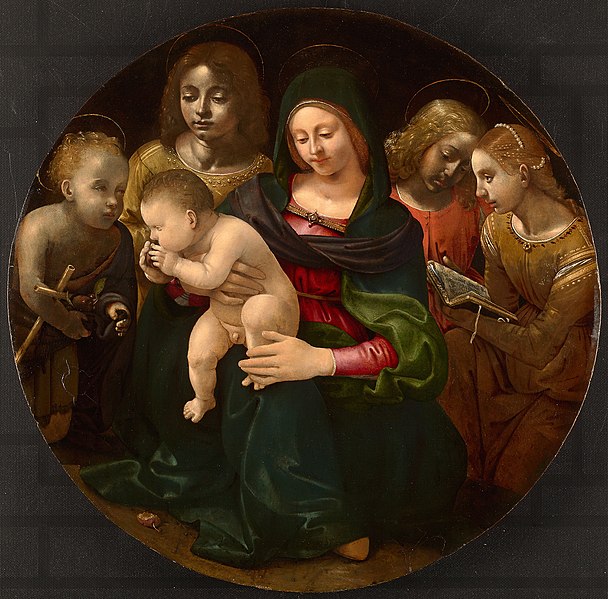
Piero di Cosimo, one of the most unconventional artists of Renaissance Florence, added new twists to familiar subjects in his paintings.
In this scene, John the Baptist gives an infant Jesus a plum, which he devours with gusto while another plum falls to the ground, partially devoured.
Saint Cecilia, the patron saint of musicians, is depicted singing from a music book to the right, as angels without wings gaze on.
8. Virgin and Child with the Young Saint John the Baptist – Bronzino
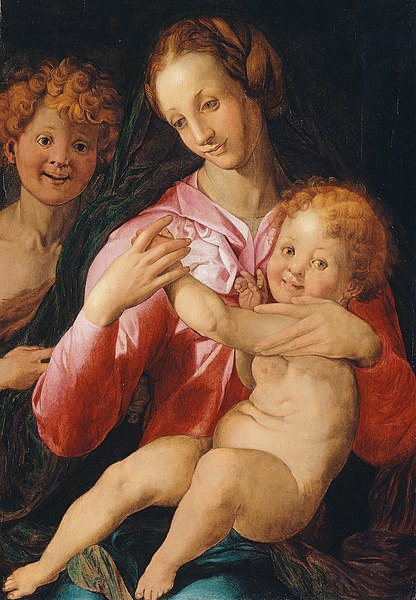
Bronzino, or Agnolo Bronzino, was the common name for the Florentine Mannerist painter Agnolo di Cosimo. Bronzino, his nickname, may allude to the color of his skin or hair.
He spent his whole life in Florence, where he was employed as a court painter for Grand Duke Cosimo I de’ Medici beginning in his late 30s.
There are three known copies of the composition in addition to the original. There is no completed work.
Both this and the second duplicate are based on a cartoon or pattern drawing of the original, suggesting that they are derivative works. It’s baffling that so many attempts were made at making these copies only to be scrapped halfway through.
9. The Virgin and Child with Saint Anne and Saint John the Baptist – Leonardo da Vinci
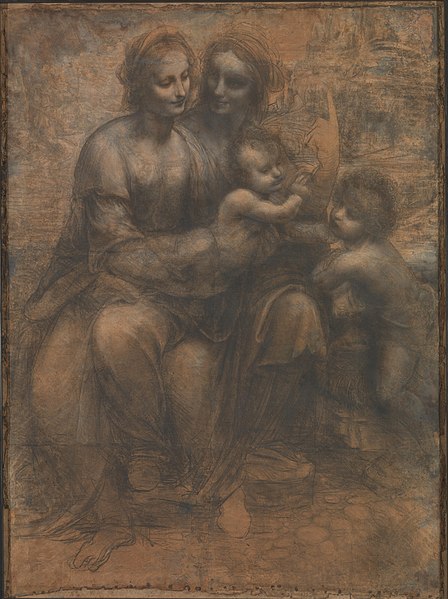
Leonardo da Vinci drew the Virgin and Child with Saint Anne and Saint John the Baptist, also known as The Burlington House Cartoon. Charcoal and black and white chalk were used to create the drawing on eight interleaved pieces of paper. The vast size and unusual shape of the design make it appear to be a painting’s preliminary sketch.
However, the drawing may have been a study for a painting commissioned by Louis XII but never completed. This is the artist’s sole known large-scale drawing.
Mary is shown sitting on her mother’s thigh, Saint Anne, while she cradles the infant Jesus; Christ’s little cousin, John the Baptist, stands to the right. Now on display in London’s National Gallery.
In either 1499 or 1500, near the close of the artist’s first Milanese era, or 1506 or 1508, while he shuttled between Florence and Milan, it was likely completed.
10. The Head of St John the Baptist – Giovanni Bellini
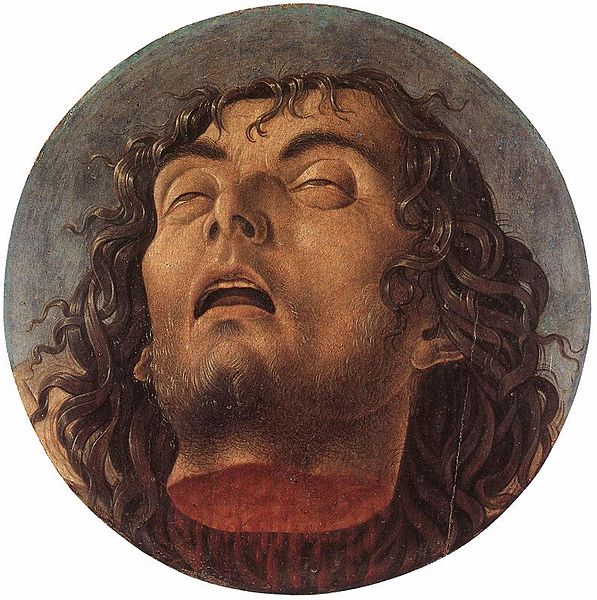
Giovanni Bellini, an Italian Renaissance painter, painted the tondo depicting the saint’s head. The Pesaro Civic Museum has it in it’s permanent collection.
St. John the Baptist’s severed head is shown in the painting, his neck still streaming with blood.
The treatises on perspective portrayal of the human figure, such as De prospectiva pingendi by Piero della Francesca, were published at the period, and their impact may be seen in the artist’s use of a perspective from below.
Its vivid colors and dramatic composition are reminiscent of Bellini’s first fully developed work, the St. Vincent Ferrer Polyptych (about 1464), which is considered his first masterpiece.

